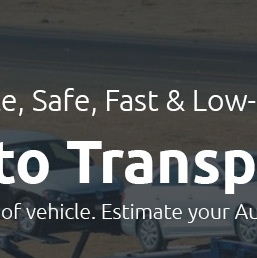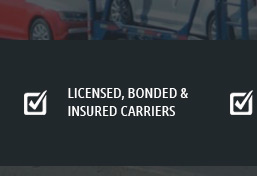 |
|
||||
 |
 |
 |
 |
||
 |
 |
|||||
 |
 |
 |
 |
 |
 |
 |
||
 |
 |
 |
 |
 |
 |
 |
 |
 |
 |
 |
|
 |
How to Get a Vehicle Shipped: A Comprehensive GuideShipping a vehicle can often seem daunting, especially if you’ve never done it before. However, with a little research and preparation, you can make the process seamless and stress-free. Whether you're moving across the country or buying a car from a different state, understanding how to navigate the vehicle shipping process can save you time, money, and headaches. Let's explore the key steps and answer some common concerns. Understanding Your Options First and foremost, you need to decide on the type of shipping service that best suits your needs. There are generally two options to choose from: open transport and enclosed transport. Open transport is the most common and cost-effective method, where your vehicle is loaded onto an open trailer. While this method is generally safe, your vehicle will be exposed to the elements. On the other hand, enclosed transport offers more protection as your vehicle is transported in a closed trailer, shielding it from weather and road debris. Though more expensive, this option is ideal for high-value or classic cars. Choosing the Right Shipping Company Once you’ve decided on the type of transport, the next step is selecting a reputable shipping company. This is crucial, as the quality of the service can vary significantly between providers. Start by researching online reviews and asking for recommendations from friends or family who have shipped vehicles before. Look for companies with a strong track record of reliability and customer satisfaction. It might be tempting to go with the cheapest option, but remember that quality service often comes at a price. A company with a slightly higher quote might offer better insurance coverage or more reliable delivery times. Preparing Your Vehicle for Shipment Before your vehicle is picked up, it’s important to prepare it for transport. Start by giving it a thorough cleaning, which will make it easier to inspect for any pre-existing damage. Document any scratches, dents, or other imperfections with photographs. This will be invaluable if you need to make a claim later. Remove all personal items from the vehicle, as most shipping companies will not insure them. Additionally, ensure that the gas tank is no more than a quarter full to reduce weight and potential hazards. Managing Expectations and Delivery It’s essential to have realistic expectations regarding delivery times. While shipping companies strive for timely delivery, unforeseen circumstances such as weather conditions or traffic can cause delays. Stay in touch with the shipping company for updates and be flexible with your schedule. Upon delivery, conduct a thorough inspection of your vehicle to ensure it was transported without any damage. Compare its condition to the photos taken before shipment and address any issues with the company immediately. Conclusion In conclusion, shipping a vehicle doesn’t have to be a hassle. By understanding your options, choosing a reputable company, preparing your vehicle properly, and managing your expectations, you can ensure a smooth and successful transport experience. Remember, the key to a stress-free vehicle shipment lies in the details and preparation. Take your time to research and plan, and you’ll find the process to be much easier than anticipated. https://www.jdpower.com/cars/shopping-guides/how-to-ship-a-car-you-purchased-online
Get A Quote From A Car Shipping Company - Make Your Order And Arrange For Shipment - Liaise With The Dealership - Get The Bill Of Lading - Summary. https://www.sherpaautotransport.com/guides/how-to-ship-a-car/
Key Takeaways. Car shipping is an efficient and cost-effective way to transport your vehicle long distances. By working with a reputable ... https://www.move.org/how-to-ship-a-car-you-just-bought/
4 steps to ship a car you just bought - Pick an auto transport company - Pick a shipment method - Coordinate with the seller or dealership - Check your bill of ...
|
